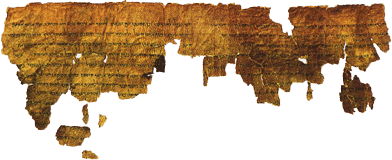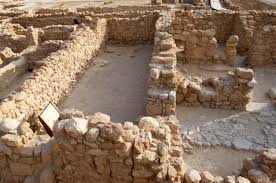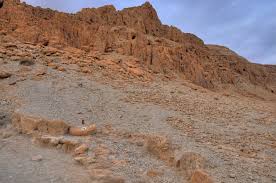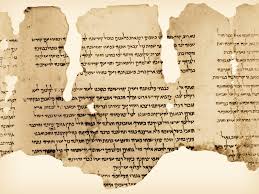Home » Dead Sea Scrolls » Religious Life at Qumran
Religious Life at Qumran
The Dead Sea Scrolls No Qumran figure has been more frequently discussed than the Teacher of Righteousness. Although his sobriquet also may be translated as the “correct teacher,” the current translation has become almost a technical term in the field of Qumran studies and cannot be easily replaced. The “teacher” has been credited with so […]
The Dead Sea Scrolls The various types of sectarian leaders and the roles they played tell us much about the basic transitions Judaism was undergoing at that time. Initially, the sect was led by Zadokite priests who started the breakaway group in protest over the Hasmonaean takeover of the high priesthood sometime after 152 B.C.E. […]
The Dead Sea Scrolls In an independent literary unit, the Temple Scroll presents a series of purity regulations, consisting of laws designed to insure the purity of the Temple precincts and the land (columns 46–47). The passage sets out the need for a barrier, apparently consisting of a wide, empty space of about 150 feet […]
The Dead Sea Scrolls Rule of the Community places an official known as the paqid (appointed one) at the head of the community. It was the job of the paqid to administer the initial test for those wishing to join the sect- And whoever volunteers from Israel to join the council of the community, the […]
The Dead Sea Scrolls MEVAQQER Most likely the various sectarian leadership roles did not all coexist at the same time, but rather represent different stages in the organizational history of the sectarian community. The role of the Teacher of Righteousness may have been inherited after his death by the mevaqqer (examiner), to whom we now […]
The Dead Sea Scrolls It is difficult to define precisely the role of another leadership type, the maskil. The word itself derives from a verb, meaning, “to enlighten,” and it might be translated literally as “enlightener,” that is, “instructor.” No doubt the use of the term was influenced by Daniel 12—a chapter known to have […]
The Dead Sea Scrolls THE NATURE OF GOD In their external appearance, the sectarian manuscripts themselves already testify to a tremendous respect for God. The sectarians generally avoided use of the tetragrammaton—the four-letter divine name YHVH—traditionally pronoun “Adonai” by Jews and translated “Lord” in most Bible translations. They often substituted other divine names for YHVH […]
The Dead Sea Scrolls A few poetic texts found at Qumran portray women in erotic contexts. Even though those texts show no evidence of having been composed by the sectarians, and in some cases were definitely not, they are important to this discussion because their presence in the Qumran collection suggests that they were of […]
The Dead Sea Scrolls A text that may provide information about organized liturgy at Qumran is the Psalms Scroll. This scroll, as we have already explained, contains canonical and noncanonical psalms, as well as numerous other poetic prayer texts. Many of the canonical psalms in this text are exactly the same as those incorporated into […]
The Dead Sea Scrolls Prayers for Festivals are preserved in three manuscripts from cave 4—Prayers for Festivals A, B, and C—and another fragment from cave 1. The cave 4 manuscripts have been dated to the beginning of the first century C.E. (Prayers for Festivals A and B) and the end of the Hasmonaean period, about […]








